Did you know that rice, a staple in many households, can last for years when stored properly? With the right techniques, you can ensure that your rice stays fresh, flavorful, and ready for your next meal. In this comprehensive guide, we’ll explore different types of rice and their shelf lives, essential factors for long-term storage, top methods for storing rice, and tips for storing cooked rice. So, let’s dive in and learn how to store rice long term!
Key Takeaways
- Learn about different types of rice and their shelf life storage requirements.
- Essential factors for long-term storage include temperature control, moisture prevention, oxygen management, pest control & container selection.
- Identify signs of spoilage such as mold/discoloration, odors/off flavors & pests to ensure safe consumption.
Types of Rice and Their Shelf Life
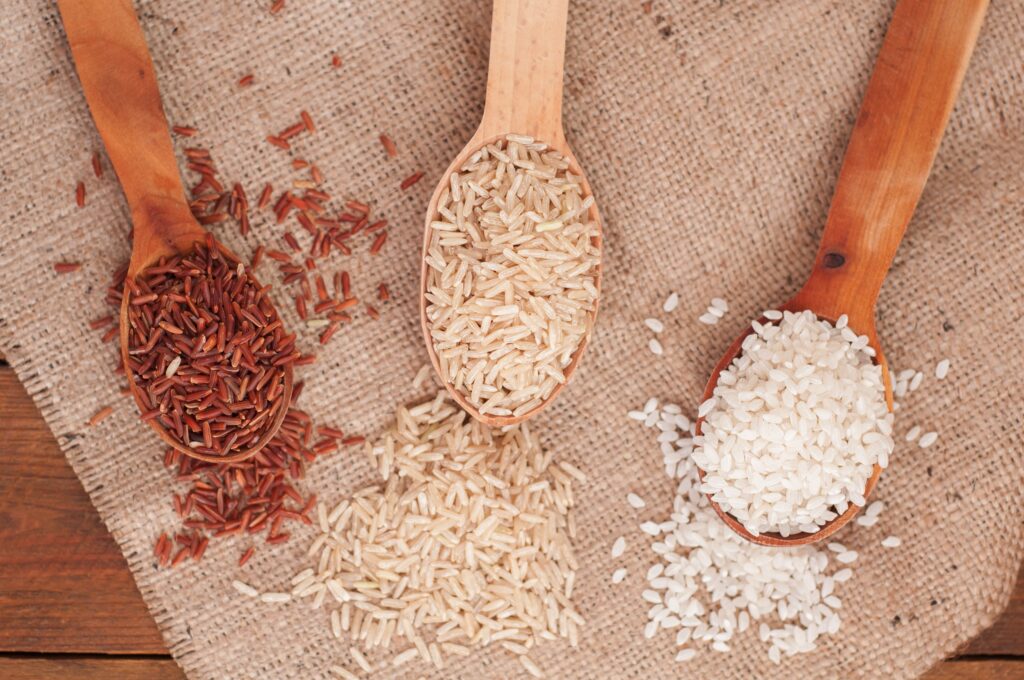
Rice is a versatile grain that comes in various types, each with its distinct characteristics and shelf life. Understanding the unique storage requirements of each variety will help you keep your rice stored fresh and flavorful for an extended period.
We will now examine diverse rice varieties, such as:
- white rice
- brown rice
- instant rice
- wild rice
We’ll delve into their particular storage requirements and ways to extend their shelf life for a delightful culinary experience.
White Rice
White rice is the most common type of rice and has the longest shelf life among rice varieties. When stored properly, it can last up to 30 years! This impressive longevity is due to the removal of the bran and germ during the milling process, resulting in a more stable and less perishable product.
For an extended shelf life, consider utilizing optimal storage methods such as:
- Mylar bags with oxygen absorbers
- Mason jars
- Food-grade buckets
- Vacuum-sealed bags or containers
- Freezer storage
Additionally, cooked white rice can be refrigerated or frozen and reheated before consumption, maintaining its quality and taste.
Brown Rice
Brown rice, unlike white rice, retains its natural bran layer, making it a healthier option but also reducing its shelf life. When stored in airtight containers, brown rice can last for 6-12 months.
Retain optimal freshness by storing uncooked brown rice in a cool place within an airtight container, either refrigerated or frozen, and consume it within 6 months of purchase. Additionally, using oxygen absorbers in the storage container can help preserve the rice’s freshness.
Other Rice Varieties
Apart from white and brown rice, other varieties like instant, wild, and colored rice also have varying shelf lives. Each type requires proper storage to ensure optimal freshness.
For example, cooked wild rice can be stored in the refrigerator for up to 4-6 days and in the freezer for up to 6 months. Understanding the unique storage requirements of each rice variety will extend their shelf life, allowing you to enjoy their distinctive flavors and textures in your dishes.
Essential Factors for Long-Term Rice Storage
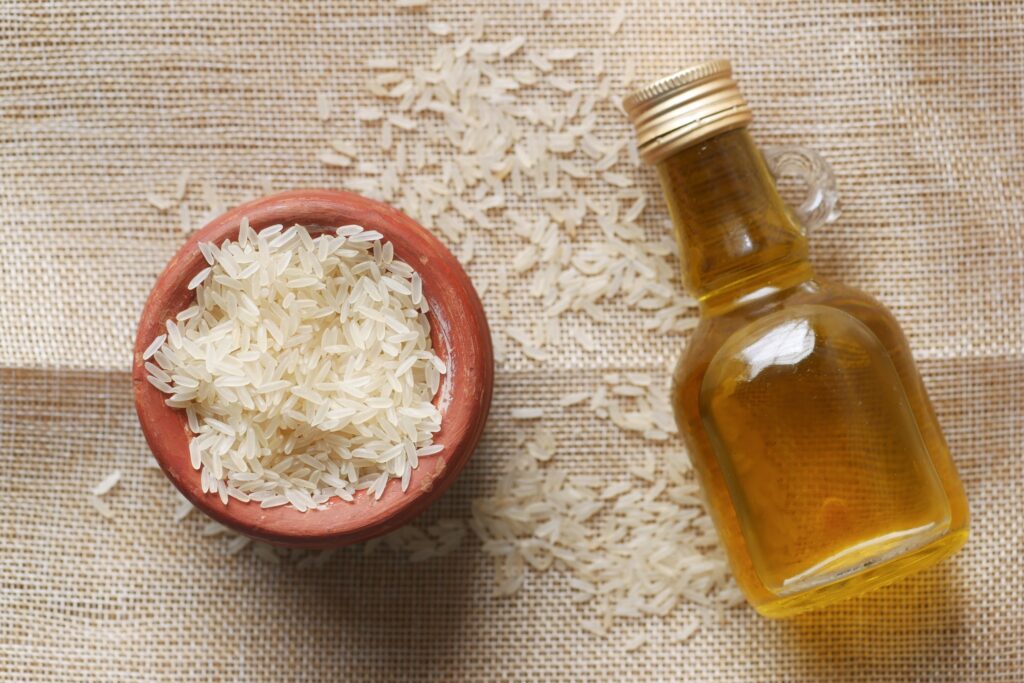
When it comes to long-term rice storage, several key factors play a crucial role in ensuring your rice remains fresh and delicious. We will now discuss the role of factors like:
- Temperature control
- Moisture prevention
- Oxygen management
- Pest control
- Container choice
In maintaining rice freshness, it’s essential to store rice long enough to preserve its quality and taste.
Mastering these critical factors will instill confidence in your rice storage capabilities, ensuring the rice remains as delicious and nutritious as when purchased.
Temperature Control
Ideal temperature plays a significant role in preserving rice for extended periods. To maintain the best quality, store rice at temperatures between 40-70°F. Maintaining a consistent temperature is vital to ward off spoilage and uphold the rice’s texture and flavor.
Areas such as cellars, basements, or secluded pantries offer consistent temperature and are ideal for long-term rice storage.
Moisture Prevention
Moisture is the enemy of long-term rice storage, as it can promote mold growth and spoilage. To prevent moisture from affecting your rice, store it in a cool, dry place away from sources of humidity.
Ensure that your storage container is dry before placing the rice inside, as moisture within the container can create a breeding ground for bacteria and mold. Keeping your rice dry aids in averting spoilage and preserving its quality for longer periods.
Oxygen Management
Oxygen exposure is another crucial factor in long-term rice storage. Minimizing oxygen exposure helps to prolong the shelf life of rice and maintain its taste and texture. Oxygen absorbers and vacuum-sealed containers are effective methods to reduce oxygen exposure.
Managing oxygen levels during storage guarantees that your rice remains fresh and delectable for years.
Pest Control
Pests such as insects and rodents can quickly spoil your rice, rendering it inedible. To prevent pests from infesting your rice, use airtight containers and inspect the rice for any signs of bugs or droppings before storing.
If you discover any infested rice, discard it immediately to prevent contamination of your other stored rice. Implementing preventive measures against pests ensures that your rice remains safe for consumption.
Container Selection
Choosing the right container is essential for successful long-term rice storage. Some common storage options include:
- Airtight containers
- Vacuum sealed bags
- Mylar bags with oxygen absorbers
- Glass or plastic containers with tight-fitting lids
These containers help to keep the rice fresh and prevent moisture and pests from getting in.
When selecting a container, consider factors such as oxygen exposure, the tightness of the seal, and the use of oxygen absorbers. Selecting suitable storage containers aids in maintaining your rice’s freshness and quality for prolonged periods.
Top 5 Methods for Storing Rice Long Term
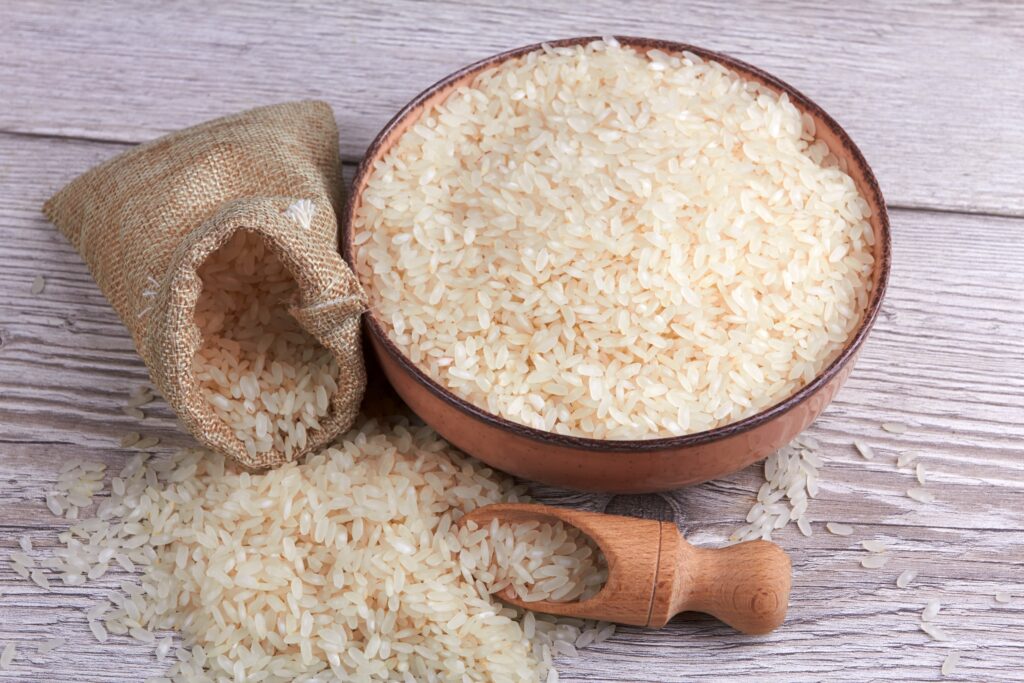
Having explored the fundamental factors for long-term rice storage, we will now discuss the best methods for effective storage. These methods include:
- Mylar bags with oxygen absorbers
- Mason jars
- Food-grade buckets
- Vacuum-sealed bags or containers
- Freezer storage
Each method offers its advantages and can help you preserve your rice for extended periods. We’ll examine these methods in more detail and understand their benefits for rice storage.
Mylar Bags with Oxygen Absorbers
Mylar bags, coupled with oxygen absorbers, are considered the most effective method for long-term rice storage. These bags block out light, moisture, and air, preventing oxidation and spoilage. They are also reusable and have high impact resistance.
Using Mylar bags with oxygen absorbers can extend your rice’s shelf life up to 30 years, promising a steady supply of fresh and tasty rice for your family.
Mason Jars
Mason jars are an affordable and easy option for storing rice. Although not as long-lasting as Mylar bags, they are suitable for white rice storage. These jars are also easily stackable and allow for efficient organization.
To enhance their effectiveness, consider using oxygen absorber packets or vacuum-sealing machines to prolong the freshness of your stored rice.
Food-Grade Buckets
Food-grade buckets are a popular option for bulk rice storage. While they are durable and can be securely sealed, they require the use of oxygen absorbers to prevent spoilage.
To store rice in food-grade buckets, follow these steps:
- Line the bucket with a food-grade liner.
- Fill the bucket with rice.
- Add oxygen absorbers.
- Seal the bucket with a lid.
- Label the buckets with the date of storage and the contents to keep track of your stored rice.
Vacuum-Sealed Bags or Containers
Vacuum-sealed bags or containers are effective in preventing oxygen exposure, a crucial factor in long-term rice storage. They also help keep out moisture and prevent rice from absorbing unwanted odors or flavors.
While these bags or containers are effective, they might necessitate extra oxygen absorbers for long-term storage.
Freezer Storage
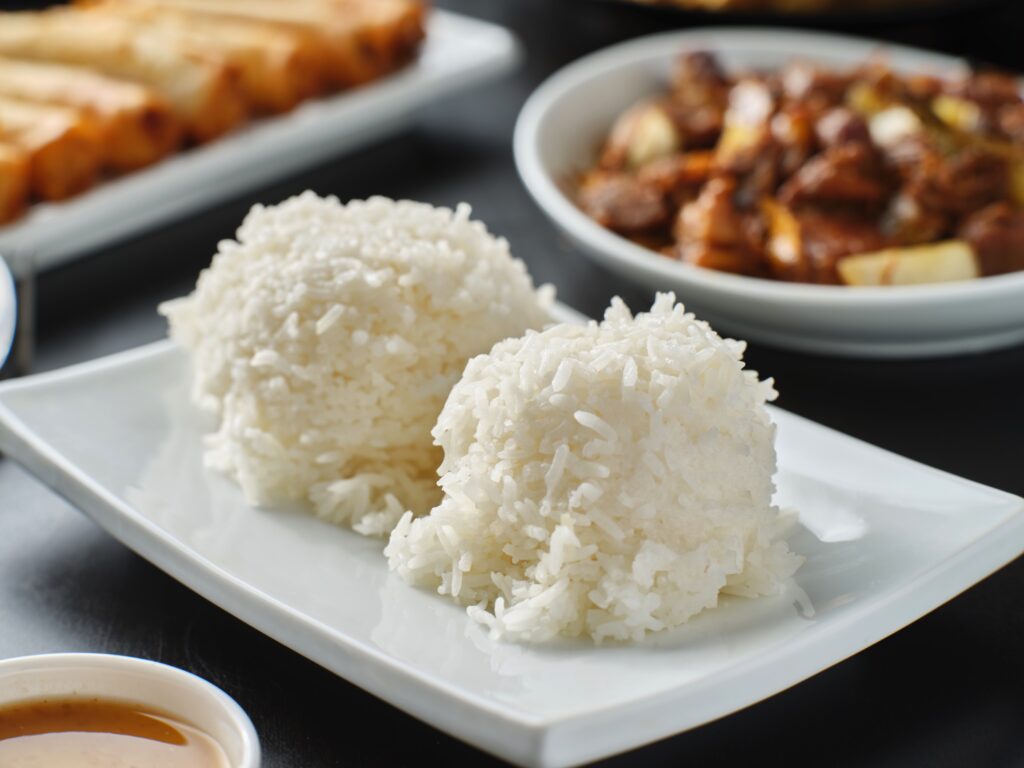
While freezer storage is suitable for short-term storage, it is not ideal for long-term rice storage due to limited space and potential power outages.
However, if you decide to use this method, ensure that the cooked rice is cooled to room temperature before placing it in a tightly sealed container and storing it in the freezer.
Storing Cooked Rice: Tips and Techniques
After learning the optimal methods for storing uncooked rice, it’s crucial to understand the right way to store cooked rice. In this section, we’ll explore the guidelines for:
- Storing cooked rice
- Refrigerating cooked rice
- Freezing cooked rice
- Reheating cooked rice
These guidelines will help maintain the freshness of the rice and prevent spoilage.
Adhering to these tips and techniques allows you to relish delicious and safe cooked rice whenever you wish.
Refrigerating Cooked Rice
Storing cooked rice in the refrigerator is a simple and effective way to prolong its freshness. To do this, place the cooked rice in an airtight container and store it in the fridge for 3-5 days.
This method not only maintains the rice’s quality but also ensures it remains safe to eat.
Freezing Cooked Rice
Freezing cooked rice is another excellent method for preserving its freshness and taste. To freeze cooked rice, cool it to room temperature, then place the frozen rice in an airtight container or freezer bag, labeling it with the date.
Frozen cooked rice can last up to 6 months, providing a convenient supply of ready-to-use rice for your future meals.
Reheating Cooked Rice
When it’s time to enjoy your stored cooked rice, it’s essential to reheat it properly to maintain its quality. To reheat cooked rice, add a small amount of liquid, such as water, broth, or juice, to prevent it from drying out.
Avoid reheating cooked rice multiple times, as this can compromise its taste and texture.
Signs of Spoiled Rice and Precautions
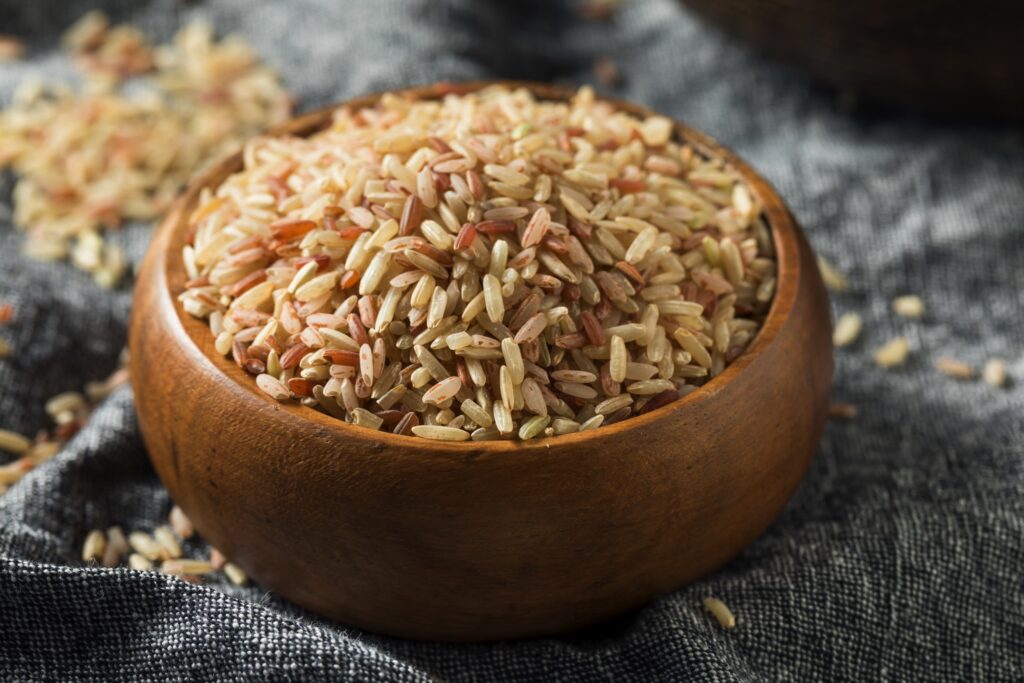
Despite our best efforts to store rice correctly, it’s vital to identify the indicators of spoiled rice and implement necessary precautions to avoid spoilage. In this section, we’ll discuss indicators of spoiled rice, such as mold, odors, and pest infestation, and the steps you can take to prevent these issues from affecting your stored rice.
Mold is one of the most common signs of spoiled rice. It can appear as a
Mold and Discoloration
Mold and discoloration are clear signs that your rice has spoiled. If you notice any of the following, it’s time to discard the affected rice:
- Darker patches
- Wet or slimy texture
- Musty smell
- Unusual colored patches
Ingesting moldy rice can cause food poisoning, making it crucial to stay alert for these signs of spoilage.
Odors and Off Flavors
Rice should have a neutral smell. If you notice a strong or off odor, such as a wet cardboard, oil paint, wood varnish, or play dough smell, this indicates spoilage or contamination.
Dispose of any rice that emits a noticeable odor to ensure consumption of only fresh and safe rice.
Pest Infestation
Pests like insects and rodents can infest your stored rice, causing contamination. Inspect your rice for any signs of pests, such as insects, droppings, or other evidence of infestation.
If you discover infested rice, here’s what you should do:
- Dispose of it instantly.
- Adopt preventive measures like using airtight containers.
- Frequently inspect your storage area to safeguard your remaining stored rice from pests.
Summary
In this comprehensive guide, we’ve explored various aspects of rice storage, including different rice types and their shelf lives, essential factors for long-term storage, top methods for storing rice, and tips for storing cooked rice. By understanding these concepts and applying the tips and techniques discussed, you can ensure that your rice remains fresh, flavorful, and safe to consume for years to come. So go ahead and confidently store your rice, knowing that you’re well-equipped with the knowledge to preserve its quality and enjoy delicious meals anytime!
Frequently Asked Questions
How do you preserve rice for a long time?
To preserve rice for a long time, it should be stored in a cool and dry environment away from strong smelling foods. It can also be refrigerated or frozen to further extend its shelf life. Rice sealed in airtight containers can last up to 30 years when stored at cooler temperatures.
How long can you stockpile rice?
Rice stored correctly in an airtight container in a cool environment can last up to two years. White, instant and wild rice can be stored for up to 30 years, while brown, black and purple rice will last around 18 months. Milled white rice can keep almost indefinitely, while whole grain rice is best stored in the refrigerator or freezer and will last for up to six months.
What are the best methods for long-term storage of rice?
The best methods for long-term storage of rice include Mylar bags with oxygen absorbers, Mason jars, food-grade buckets, vacuum-sealed bags or containers, and freezer storage.
How long can cooked rice be stored in the refrigerator?
Cooked rice can safely be stored in the refrigerator for up to 6 days.
What are the signs of spoiled rice?
Mold, discoloration, odors, and off flavors are signs of spoiled rice.
